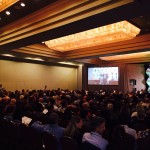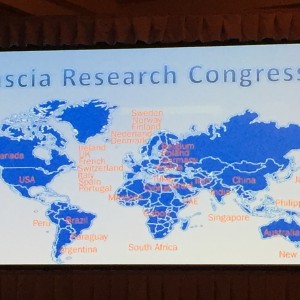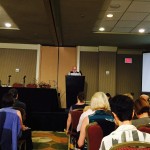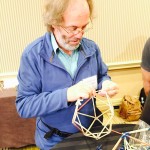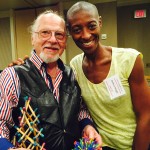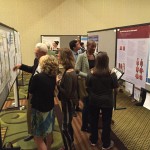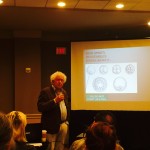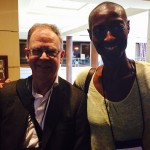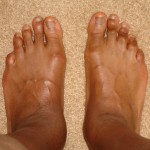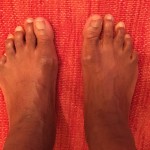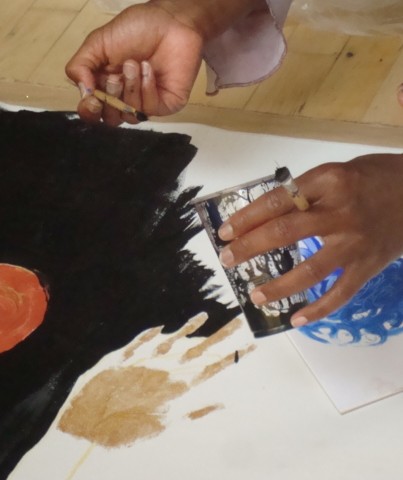Well what a show! It’s been a slow walk back home from the Fourth Fascia Research Congress in Washington DC but what a show! This congress may have been the best attended yet, with over 800 delegates attending over the 3 days, it was a hub of busying clinicians, scientists, movement practitioners and researchers all hustling together in a buzz of intellectual and practice-lead conversations.
It was stimulating space, maybe at times overwhelming; packed with squeals of laughter from reunited friends meeting and greeting again since the last FRC, new faces connecting and slowly finding common ground and that seeker searching for solace in the silence found away from the intensity of the crowds. An artificial space made real by the people coming into it and contributing to its development and growth.
Notwithstanding this trip was made more special because of my added bonus road trip that extended through to Boston, coastal Maine and Quebec. Amongst the elusive moose, expansive early autumnal hues across the wild terrain and quaint, elegant but shabby crumbling jetties and small coastal villages of Massachusetts, fresh local lobster- my head and heart have returned full… but that’s another story for another day!
My overall impression was that this was a magnificent attempt to bring together an event that’s multidisciplinary in its efforts to carve out a more informed body of information about fascia and its related topics. Hands-down, this really is the work of genius of those founding members, whilst equally acknowledging it’s not an easy job to contain and promote diverse perspectives from different discourses that have a part to play in fascia research. Part of this difficult challenge was the ongoing debate on nomenclature, which the working committee (after meeting before the congress) came up with a largely unified definition of fascia, which has been at least 4 years in debate. But amazingly this year a consensus has been reached with an additional sub-group committee formed to refine, add and develop further alternative definitions as they emerge from practitioner, researcher, and clinician’s experiences. This is great news as it means not only can fascia be communicated more effectively amongst those in fascia-cognisant therapies and disciplines, but also to wider scientific circles. And this latter point bears out with the timely invitation for the fascia research group to contribute to the next edition of the Terminologia Anatomica, a renowned anatomical textbook equivalent to Gray’s anatomy (for the Anglophones amongst us) which is fantastic progress in marking a tangible connection to the wider scientific community.
Let’s be honest any large conference can have its lows moments; where sometimes you find yourself restless and unsettled, moving from one talk to another in the parallel seminar sessions or your brain is too full to begin to untangle yet ‘more’ technical science speak! However for me there were more delightful highs than the lows where I found particular inspiration and that spoke to my intellect or challenged my ideas and practice. Here’s a taste some of the more noteable moments:
BIG – The Biotensegrity Summit hosted the first meeting of its kind, a group gathering with the aim to bring together the collected works of Stephen Levine, who’s early work on biotensegrity set the scene for clinicians and-the-like to begin thinking about human examples as systems, which challenged the traditional objective and compartmentalised paradigm that has dominated modern biological medicine. Dr Levin’s engaging and enlivened presentation for the first half was well received by a captive audience of around 100 attendees.
He reminded us of the principles of biotensegrity in human function which follow the laws of non-linear dynamics, meaning the biological material that we are made of behaves dynamically like other ‘soft materials’ such as silly putty, colloids, foam, emulsions etc. When you stress them they will move and deform fairly easily, but will stiffen quickly and become stronger with the increasing force applied. This means our cells and tissues are constantly changing their shape to establish spatial stability in the form of isocohedrens (the most stable 3-dimensional emergent shape occurring in nature). The important thing to remember is these ever changing isocohedral structures oscillate and these oscillations are key to carrying mechanical information instantaneously throughout the system, which is faster than neural stimuli in the nervous system. We as humans are believed to be complex, tensegrity structures that are constantly conveying instantaneous information from the external environment to the internal cell nucleus to govern overall health of the body.
A panel presentation followed which brought together a multidisciplinary line-up of practitioners, clinicians, scientists, researchers who spoke of how they are using/applying biotensegrity principles particularly in their work. What was interesting here was for me was discovering people who have made important contributions to their particular area of expertise; namely Dr Mike Turvey’s work on systems of perception of the body and Professor of Medicine and epidemiology Alfonse Masi’s work on clinical epidemiology and the mechanisms of disease, which provided a great opportunity to meet and talk with them. The second half of the meeting was organised around small break-out stations which I ascertained each had a theme to it, whether it be movement disciplines, biomechanics, science or model-making. Here you could speak directly with the various table facilitators in more depth.
Although initially feeling somewhat disoriented as we the delegates weren’t sure what to do and where to go, this dis-ease soon dissolved as I found myself cruising around each table grabbing onto and listening-in on conversations managing to find plenty of discussions to engage with, which in the end proved to be a rich, practical space to dialogue and share ideas.
Dr Mense’s (Professor of anatomy and cell biology with an interest in pain) stated some important conclusions from his research groups’ studies on the thoracolumbar fascia (TLF). They findings suggest that fascia is the most pain sensitive structure in the lower back, where the inner layer of superficial fascial is has the highest degree of innervation with noiceptive (unpleasant stimuli) nerve endings. Interestingly high chemical intensity stimulation of the TLF produces tonic pain and widespread network patterns more than stimulation of muscle units alone, meaning that under certain conditions fascia over the muscles themselves, may be a better indicator as to the source of wide spread pain in low back symptomology. This has implications for understanding the mechanisms and presentation of the acute/sub-acute/chronic persistence and development of non-specific low back pain and where fascia might be the key structure with which to target treatment approaches.
Robert Schleip discusses the role of fascia as a body-wide sensory network; It has a wide influence on the body’s control of function and regulation. There are over 10, 000 nerve endings per limb which terminate in the fascia. Most of these are made up of are sensory nerves that provide information at to proprioception (spatial awareness) and interoception (sense of the physiological condition of the body) and sympathetic nerves that provide a link to the autonomic nervous system (affecting plasma’s ability to leak out and blood capillary dilation). Sympathetic nerves in fascia may have an effect on nutrition and hormonal changes. Proprioceptive stimulus strongly inhibits myofascial noiceception (unpleasant stimuli) via wide-dynamic neurons (so giving mechanical inputs to the tissue can override pain signals interpreted by the brain). This all points to the fact that fascia’s influence is wide and far reaching across various systems through mechanical stimuli, more than was previously given credit.
Andry Vleeming’s always an elegant speaker to listen to. In summary his message and research are compelling, he states, “The stability of the spine depends on the interplay between the deep spinal and abdominal muscles through their interrelated myofascial components”. Vleeming and Paul Hodges work are a must for those interested in these relationships particularly for LBP, functional fitness and sports related disciplines.
Dr Micheal Kjaer spoke on tendinopathies and convincingly posited that the disruption to the substance of a tendon is most likely to occur in the inter-fascial spaces, where there will be inflammation and matrix remodelling and not in the tendon substance true. But the research remains unclear as to the mechanisms of tendinopathy, which surprises me as tendinopathy is arguably the most prevalent issue encountered in musculoskeletal/sports medicine. The best of what the research offers currently for tendinopathy treatments are eccentric/concentric training, slow contractions with high loads. We’ll just keep taking the medicine and hope that further research in fascia may shed more light on this topical area.
Jean-Claude Guimberteau’s seminar and presentations always captivate, not only for his sumptuous ‘Francophonic’ tones, but also his dazzlingly work as a surgeon displayed through a myriad of live endoscopic images taken of the fascia under high resolution. His message is refreshing to hear as he purports that the client’s response is unique, diverse and their behaviour ‘non-linear’, with movement occurring in a quantum, unpredictable manner. He eloquently demonstrates this point with live images from his work showing how the fascia continually forms and reforms, 3-dimensionally. In other words if the tissue is changing unpredictably, then one should understand when our clinical outcomes are not as we expect and this should remain at forefront of any clinicians mind as a naturally occuring observation. He also suggests manual therapists might consider applying their techniques in 3-dimensional way. Although it’s not clear what this might look like, one can see what Guimberteau’s driving at and something that I believe the Integra Method approach to fascial body work invokes, in order to augment how the connective inherently organises itself.
The poster session that I took part in was an exciting moment. Despite the room being cold and the spatial arrangement leaving it feeling slightly like a concentration camp when empty, the experience was completely absorbing as we engaged in each other’s research.
My research spoke of a phenomenological approach to fascia research and the observations that this approach revealed (see here). People were very encouraging of these ideas which seemed to resonate in some ways to their own clinical experiences and thoughts that lead to thought provoking discussions. There is a lot to be gained from being able to distil and communicate your work into its essence and no mean feat too. But an invaluable if not challenging situation to rise to. I thoroughly enjoyed it as the buzz was tremendous and encourages me to continue this work which I’ll keep you up to date on this site as it develops.
The icing on the cake for me was the eloquent and passionate post-conference workshop by Dr Jaap van der Wal, physician, philosopher and embryologist. His spoke into our hearts and minds like a preacher to the prodigal boy on a Sunday morning service.
He approached the topic of embryology with a complete paradigm shift in traditional thinking of embryological development. His philosophical weaving with the embryological anatomy created a model which encompassed a more embodied view of fascia, not only with its relation to the mesodermal layer from which it is formed, but also offered some sense and meaning to our human existence. Certainly one thought leader that I will be following closely in the future as his contribution to fascia research is fresh, provocative and relevant to our human concerns.
There were some moments outside of the academic presentations that are noteworthy. Tom Findley’s presentation received a standing ovation, for reasons that I suspect are to do with his courage that he’s showing in his outward fight with prostate cancer.
Also in recognition of and to pay due respect for his tireless work in bringing fascia research to an international forum and continues to support generously with his time and mentoring. Stephen Levin accepted the James Oschman life-time achievement award in recognition of his work on biotensegrity. Notwithstanding some of the new relationships and interests that were formed by impromptu micro-meetings between other researchers and clinicians.
Large events such as these can be overwhelming at times, but FRC4 proved to be a rich testament of meeting new/like-minded folk genuinely interested to discover areas of their work that connect to fascial-related themes. It created strong networks for me, encouraging to hear other people’s work that chime with my own, people that I didn’t know existed and people doing innovative research which was inspiring to move among such noteworthy people.
What does the future hold for fascia research? I see it as bright and rich. It’s the only place that attempts to have open discourse in the many specialisms that have a concern with the human body and how it functions (scientist, clinician, movement specialist, researcher). For me it still feels that there was more that can be done in the practical application of the science: how do we experience, interpret and understand these ideas in our own and in our client’s bodies? Always optimistic to bridge the gap between our experience and our understanding of how the science might connect what we have yet to fully know and hope to yet discover.

